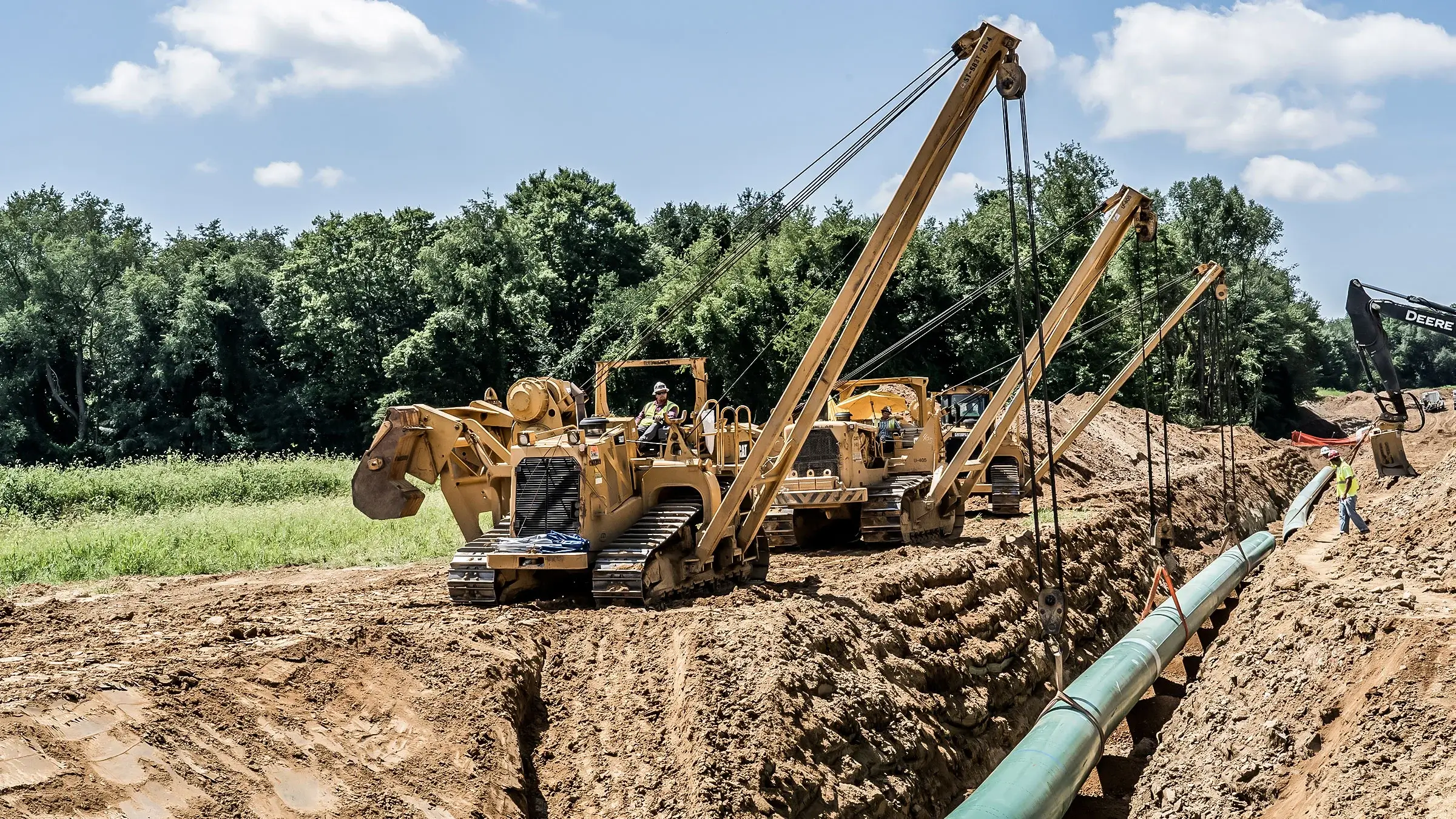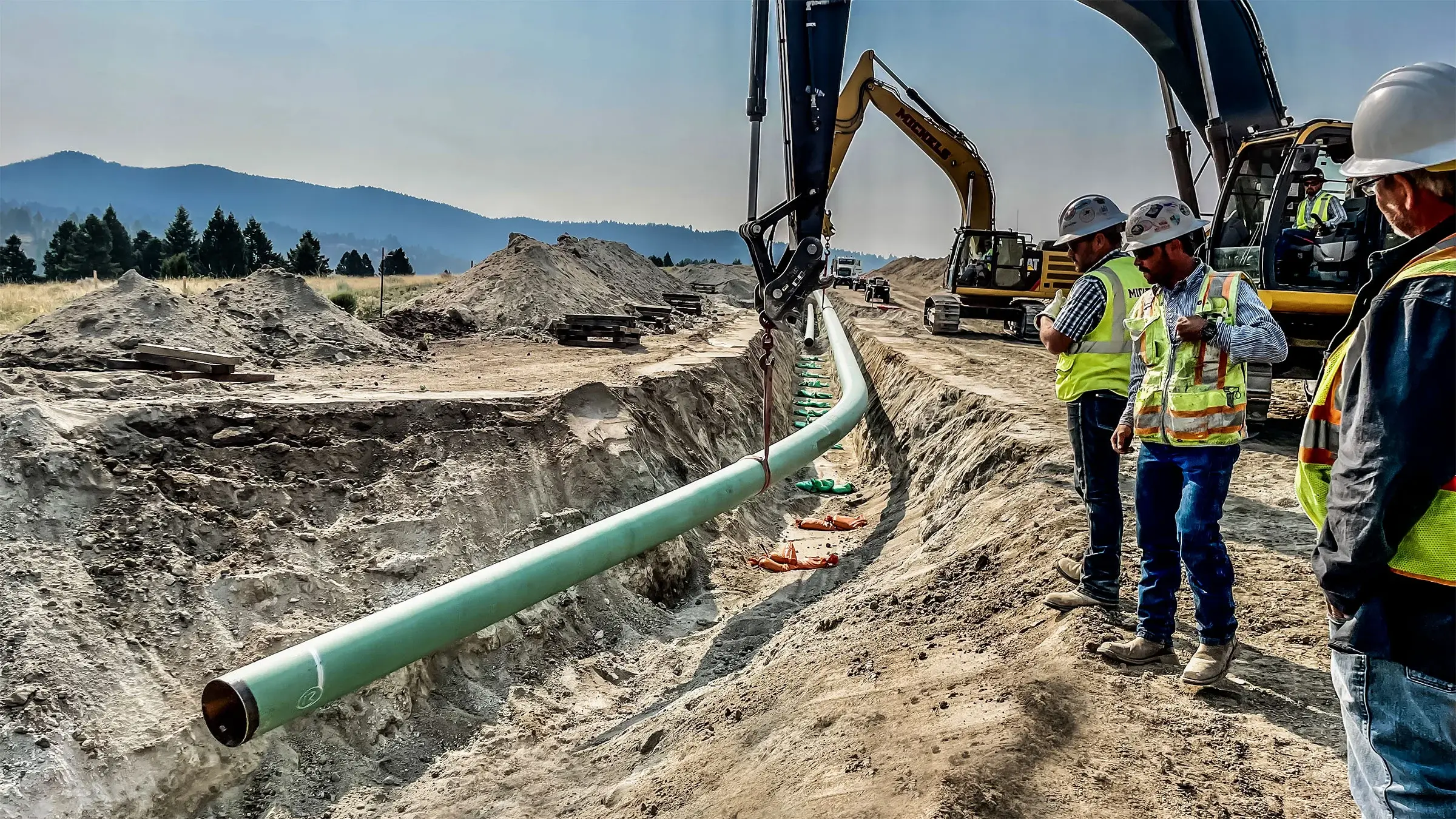Going Green With Creek Pipe HDPE installation Techniques
A Deep Study Pipes Installation: Vital Elements and Factors To Consider for Successful Projects
Reliable pipe installation is an important aspect of design projects. It entails a series of variables, from material selection to exact sizing and style. Each choice can significantly impact the system's effectiveness and long life. Comprehending these parts is important for staying clear of costly errors. Creek Pipe roustabout. As teams browse via the complexities of installation, numerous key considerations arise that warrant attention. What are the critical aspects that can make or damage a piping project?
Understanding Pipe Products and Their Applications
When picking pipe materials, one must consider the specific applications and ecological conditions they will deal with. Various materials use distinct residential properties that cater to various needs. As an example, PVC is lightweight and resistant to corrosion, making it perfect for water distribution systems. Conversely, steel pipelines give toughness and durability, suitable for high-pressure applications yet might call for safety finishes to stop rust.Copper pipelines are preferred for plumbing due to their antimicrobial homes and simplicity of installation, while polyethylene is typically utilized in underground applications due to its flexibility and resistance to cracking.The selection of product additionally rests on temperature extremes, chemical exposure, and installation area. For high-temperature applications, products like CPVC or PEX can be helpful. Eventually, understanding the characteristics and constraints of each product aids in making informed choices that improve system efficiency and longevity.
Importance of Correct Sizing and Style
Proper sizing and layout of pipelines are vital for guaranteeing optimal flow prices and lessening pressure loss. These factors additionally play a considerable role in establishing the compatibility of products used in the installation. A methodical approach to sizing and layout can considerably enhance the performance and longevity of a piping system.
Influence On Flow Rates
Circulation rates in piping systems are seriously influenced by the sizing and style of the pipelines. Appropriately sized pipelines guarantee that the fluid can move effectively, decreasing turbulence and making the most of circulation capacity. Large pipelines can result in lowered flow velocities, while undersized pipes might limit circulation, resulting in boosted rubbing and prospective clogs. The design needs to likewise take into consideration factors such as pipe product, inner surface smoothness, and design, as these add to the overall efficiency of fluid transport. Furthermore, the arrangement of fittings and links within the system can influence circulation prices. Careful interest to pipe sizing and style is necessary for enhancing flow performance in any piping installation task.
Stress Loss Factors To Consider

How can push loss substantially impact the efficiency of a piping system? Stress loss is a critical factor that can substantially decrease the efficiency of fluid transportation systems. When pipes are improperly sized or created, excessive stress loss may take place, resulting in decreased flow prices and enhanced power consumption. This inadequacy can lead to greater operational prices and potential system failings. Proper sizing and style are important to decrease pressure loss, making sure that liquid dynamics continue to be perfect throughout the system. Designers should meticulously think about aspects such as pipe diameter, length, and product to attain an efficient equilibrium. Ultimately, attending to stress loss during the style stage can enhance dependability and long life, making it essential for effective piping tasks.
Material Compatibility Aspects
Stress loss is not the only element that can affect the efficiency of a piping system; material compatibility also plays a considerable duty in overall effectiveness. Making certain that the materials utilized in a piping system are suitable with the liquids they will certainly carry is crucial. Different materials can react negatively to different chemicals, bring about deterioration, degradation, or contamination. This can ultimately compromise the integrity of the system and affect its longevity. Additionally, proper sizing and style are necessary to accommodate thermal growth and tightening, which can better affect product performance. Evaluating factors such as temperature, stress, and chemical composition is crucial in selecting appropriate products, consequently improving system reliability and reducing upkeep prices in the lengthy term.
Strategies for Accurate Pipe Installation
Precise pipe installation is vital for ensuring system efficiency and durability. Several methods can boost the precision of this procedure. Careful measurement is crucial; installers ought to make use of top quality tools such as laser degrees and tape measures to establish the exact lengths and angles needed. Next off, correct pipe cutting methods, like making use of a pipe cutter as opposed to a hacksaw, assurance tidy sides that help with much better links. Additionally, the use of placement devices, such as pipe jigs, can notably improve accuracy throughout assembly. It is also a good idea to think about thermal expansion; enabling for ample spacing and development joints can prevent future misalignments. The installation group must comply with maker standards to stick to certain suggestions associated to each pipe kind. By applying these strategies, the chance of leakages and system failings reduces, eventually adding to an extra reliable piping system.
Ensuring Pipe Placement and Support
Proper placement and support are essential to the integrity and performance of any kind of piping system. Imbalance can cause boosted anxiety on joints, prospective leaks, and decreased efficiency. To guarantee proper placement, it is necessary to use appropriate tools such as laser degrees and placement assesses. These tools help attain exact positioning, ensuring that pipelines are set up in accordance with design specifications.Support systems should be developed to suit thermal growth and tightening, in addition to the weight of the pipelines and their components. Picking the ideal kind of supports, wall mounts, and braces is critical. Each ought to be mounted at specified intervals to stop sagging or unnecessary stress on the pipes. Routine inspections complying with installation can assist recognize any misalignments or indicators of poor support. By prioritizing positioning and assistance, one can greatly improve the longevity and functionality of the piping system.
Common Installation Errors to Prevent

Examining and Examination for Top Quality Assurance
The installation procedure might show up complete, detailed screening and inspection are essential to guaranteeing the lasting dependability of a piping system. Numerous techniques are used to examine the integrity of the installation, including pressure examinations, visual assessments, and non-destructive screening (NDT) techniques. Pressure examinations validate that the system can endure functional problems without leaks, while visual assessments aid identify any type of noticeable defects in the pipes or joints. NDT techniques, such as ultrasonic or radiographic screening, provide insights into the product honesty without compromising the system.Additionally, documenting the testing results is essential for future recommendation and conformity with sector criteria. This documentation serves not only as a quality control measure but likewise as a lawful guard. Ultimately, a detailed testing and assessment method adds to the total safety and effectiveness of the piping system, guaranteeing it meets the necessary efficiency requirements with time.
Maintenance Tips for Long-lasting Pipe Solutions
Preserving a pipeline system needs normal inspections and keeping an eye on to recognize potential concerns before they escalate. Executing efficient cleansing strategies is additionally essential for preventing buildup that can hinder performance. With each other, these techniques add to the durability and reliability of the piping infrastructure.
Routine Evaluations and Monitoring
Regular inspections and surveillance are necessary for making sure the durability and efficiency of pipe systems. Normal assessments can help recognize prospective issues such as leakages, rust, or blockages prior to they escalate right into considerable problems. Applying a routine for regular assessments enables the very early discovery of deterioration, making it possible for timely repairs. Surveillance pressure degrees and flow prices can also give important understandings into system efficiency, making certain that any type of abnormalities are dealt with without delay. Additionally, using innovative innovations, such as infrared electronic cameras or ultrasonic testing, can improve the examination process by supplying detailed info regarding pipe problems. Ultimately, constant surveillance and inspections contribute to the integrity and resilience of pipe systems, minimizing the threat of costly repair work and downtime.

Efficient Cleansing Techniques
Effective cleaning methods are crucial for preserving the honesty and functionality of pipe systems. On a regular basis arranged maintenance, such as flushing systems with water, aids eliminate debris and buildup. For even more stubborn clogs, experts often recommend hydro jetting, which uses high-pressure water to clean pipe interiors thoroughly. Chemical cleaners can also be made use of yet need everun loader to be picked carefully to stay clear of destructive pipelines. In enhancement, utilizing tools like pipe video cameras can aid in identifying trouble locations and making sure efficient cleaning. Keeping correct drain and preventing the disposal of hazardous substances down pipelines additionally add to longevity. Overall, regular cleaning practices not just boost performance yet likewise decrease the risk of pricey repair work in the future.
Frequently Asked Inquiries
What Are the Labor Expenses Connected With Pipe Installation Projects?
Labor expenses for pipe installation projects differ commonly, affected by aspects like project intricacy, local wage prices, and needed abilities (Creek Pipe reviews). Usually, these prices can range from like this $50 to $100 per hour, relying on the workforce entailed
Exactly How Do Neighborhood Regulations Affect Pipe Installation Practices?
Regional regulations considerably influence pipe installation methods by establishing security criteria, material specs, and installation approaches. Compliance with these guidelines guarantees job security, ecological protection, and adherence to regional codes, inevitably influencing overall job success and prices.
What Tools Are Vital for Pipe Installation?
Crucial tools for pipe installation include pipe wrenches, cutters, and fittings. Furthermore, sealers, gauging tapes, and degrees guarantee accuracy and sturdiness. Correct tools promotes efficiency and adherence to safety requirements throughout the installation procedure.
Just How Can Weather Conditions Impact the Installation Process?
Weather greatly impact the installation process, as extreme temperature levels, rainfall, or wind can influence product stability, worker security, and job timelines. Appropriate planning and scheduling are vital to minimize these possible obstacles throughout installation.
Are There Warranties for Installed Pipe Equipments?
Service warranties for set up pipe systems commonly vary by manufacturer and installation contractor. Typically, they cover issues and handiwork for a specific period, ensuring the system's integrity and supplying peace of mind to the homeowner.